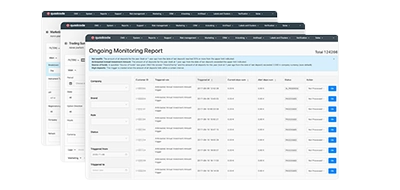กลับ
Contents
Pip ใน Forex คืออะไร: มูลค่าและการคำนวณ


Demetris Makrides
Senior Business Development Manager

Vitaly Makarenko
Chief Commercial Officer
Pip คือคำที่แสดงตำแหน่งทศนิยมสุดท้ายของราคาซื้อขาย ในคู่ซื้อขายส่วนใหญ่ จำนวนตำแหน่งทศนิยมคือ 4 ดังนั้น 1 Pip จึงหมายถึง 0.0001
เมื่อพูดถึงการซื้อขาย pip เป็นหน่วยมาตรฐานในการวัดว่าอัตราแลกเปลี่ยนภายในคู่การซื้อขายเปลี่ยนแปลงไปมากน้อยเพียงใด
ประเด็นสำคัญ:
- Pip ในการเทรด Forex คืออะไร?
- ปิเปตคืออะไร และแตกต่างจากปิเปตอย่างไร?
- จะคำนวณค่า pip ได้อย่างไร?
- จะค้นหาค่า pip ในสกุลเงินที่เลือกของบัญชีซื้อขายของคุณได้อย่างไร?
- สเปรดหมายถึงอะไร และขึ้นอยู่กับจุดอย่างไร
Pip ในการซื้อขาย Forex คืออะไร?
pip คือการย่อค่าที่สามารถถอดรหัสได้เป็น 'เปอร์เซ็นต์เป็นคะแนน' ซึ่งเป็นหน่วยมาตรฐานของการเปลี่ยนแปลงราคาของคู่ซื้อขาย โดยทั่วไปแล้ว pip จะสอดคล้องกับ 4ไทย digit after ไทยe decimal point. Meanwhile, ไทยe exception exists as well.
มาเจาะลึกความเข้าใจเกี่ยวกับ pip มากขึ้นเพื่อแสดงให้เห็นวิธีการทำงานของมันในตัวอย่าง
อัตราแลกเปลี่ยนของคู่ซื้อขายส่วนใหญ่จะมีทศนิยมสี่ตำแหน่ง ตัวอย่างเช่น:
- อัตราแลกเปลี่ยน USD/BRL คือ 5.7264-
- อัตราแลกเปลี่ยน EUR/CAD คือ 1.5140-
- อัตราแลกเปลี่ยน AUD/CHF คือ 0.5649-
4 ค่ะไทย digit after ไทยe decimal point is named a pip to simplify ไทยe calculations.
เช่น จะทำเครื่องหมายส่วนต่างอย่างไร เมื่ออัตราแลกเปลี่ยน USD/BRL เปลี่ยนจาก 5.7264 เป็น 5.7269? ถ้าเราบอกว่าราคาเปลี่ยนไป 0.0005 คงจะซับซ้อนและไม่ชัดเจน โดยเฉพาะการเทรด Forex ที่วินาทีมีความสำคัญมาก

การแนะนำ pip ทำให้การคำนวณง่ายขึ้นมาก ปัจจุบัน เราอาจกล่าวได้ว่าราคา USD/BRL เปลี่ยนแปลงไป 5 pip และนักลงทุนหรือเทรดเดอร์ทุกคนเข้าใจสิ่งที่เรากำลังพูดถึง
ในขณะเดียวกัน กฎนี้ใช้ไม่ได้กับการซื้อขายคู่กับเงินเยนญี่ปุ่น (JPY) เมื่อพูดถึงคู่เงิน JPY หนึ่ง pip เท่ากับ 2และ ตัวเลขหลังจุดทศนิยม ตัวอย่างเช่น เมื่อเทรดเดอร์ต้องการแจ้งให้เราทราบเกี่ยวกับการเปลี่ยนแปลงของราคา EUR/JPY จาก 164.36 เป็น 164.39 เขาบอกว่าราคาเพิ่มขึ้น 3 pips

นอกเหนือจากคู่ซื้อขายที่รวม JPY แล้ว สถานการณ์เดียวกันนี้ยังเกิดขึ้นในตลาดโลหะด้วย เมื่อพูดถึงทองคำ เงิน และโลหะอื่นๆ หนึ่ง pip คือ 2และ ตัวเลขก็เช่นกัน
ปิเปตในการเทรด Forex คืออะไร? ความแตกต่างระหว่างปิเปตและปิเปต
ในตอนแรก หนึ่ง pip ถือเป็นหน่วยวัดที่เล็กที่สุดในการคำนวณการเปลี่ยนแปลงของราคาสินทรัพย์ ต่อมาเมื่อเวลาผ่านไป การวัดที่แม่นยำยิ่งขึ้นก็ปรากฏขึ้น โบรกเกอร์ Forex ที่ทันสมัยหลายแห่งแสดงราคาสินทรัพย์ด้วยตัวเลข 5 หลักหลังจุดทศนิยม (ในกรณีของสกุลเงินที่จับคู่กับ JPY จะมี 3 หลักให้เลือก)
ดังนั้นอัตราแลกเปลี่ยนของ USD/BRL จึงไม่ใช่ 5.7264 แต่เป็น 5.72648 ส่วนอัตราแลกเปลี่ยนของ EUR/JPY ไม่ใช่ 164.36 แต่เป็น 164.361
เห็นได้ชัดว่ามีความจำเป็นต้องเพิ่มหน่วยการวัดเพื่อทำเครื่องหมาย 5ไทย digit after ไทยe decimal point.
ปิเปตหมายถึงหน่วยของ pip (1/10 ของ pip) เมื่อเราต้องการแจ้งเทรดเดอร์ว่าราคา EUR/USD เปลี่ยนแปลงจาก 1.19565 เป็น 1.19579 เราอาจกล่าวได้ว่าราคาเพิ่มขึ้น 1 pip และ 4 pip หรือ 14 pip

นี่คือสาเหตุที่ปิเปตช่วยให้ผู้ซื้อขายและนักลงทุน Forex ระบุอัตราแลกเปลี่ยนได้อย่างแม่นยำที่สุด
ค่า Pip คืออะไร และจะคำนวณได้อย่างไร?
ทำไมเทรดเดอร์จึงจำเป็นต้องคำนวณมูลค่า pip? บัญชีซื้อขายจะเปิดด้วยสกุลเงินจริง ไม่ใช่ pip ดังนั้นคุณจำเป็นต้องเข้าใจมูลค่า pip เพื่อประเมินกำไรหรือขาดทุนจากการเทรดของคุณอย่างถูกต้อง ความเข้าใจนี้จะช่วยให้เทรดเดอร์เลือกสกุลเงินที่เหมาะสม กลยุทธ์การจัดการความเสี่ยง -
มูลค่าของ pip จะขึ้นอยู่กับปัจจัยต่างๆ ดังต่อไปนี้: คู่การซื้อขาย, ขนาดการซื้อขาย และอัตราแลกเปลี่ยนปัจจุบัน
ยิ่งไปกว่านั้น วิธีการคำนวณมูลค่า pip ขึ้นอยู่กับสถานะสกุลเงินในคู่การซื้อขายโดยตรง โดยอิงจากสถานะดังกล่าว มีสองวิธีในการคำนวณมูลค่า pip
ตัวอย่างเช่น หากต้องการคำนวณค่า pip ในสกุลเงินอ้างอิง เราจำเป็นต้องใช้สูตรต่อไปนี้:
มูลค่า Pip = ขนาดการซื้อขาย (หน่วย) * 0.0001
ลองคำนวณมูลค่าของล็อตมาตรฐาน (100,000 หน่วย) ของ EUR/USD เราต้องคูณ 100,000 ด้วย 0.0001 แล้วจะได้ 10 หมายความว่าอย่างไร? ทุกๆ pip ของการเทรดนั้นจะเท่ากับ $10 เมื่อสถานะของเทรดเดอร์เพิ่มขึ้นที่ 3 pip เขาจะได้กำไร $30 และในทางกลับกัน
ในขณะเดียวกัน ก็มีบางกรณีที่สกุลเงินในบัญชีเทรดเดอร์ไม่ตรงกับสกุลเงินอ้างอิง ควรทำอย่างไร? ลองคำนวณค่า pip ภายในคู่สกุลเงิน EUR/JPY กัน ก่อนอื่น เราต้องใช้สูตรเดียวกัน ค่า pip = 100,000 หน่วย * 0.01 (สำหรับ JPY เราใช้ตัวคูณ 0.01 แทน 0.0001) ค่า pip ของคู่สกุลเงิน EUR/JPY คือ 1,000 ซึ่งหมายความว่า 1 pip มีค่าเท่ากับ 1,000 JPY ในขณะเดียวกัน บัญชีเทรดของเราใช้เงินดอลลาร์สหรัฐฯ ค่า pip ของ EUR/JPY ในสกุลเงิน USD คือเท่าใด? ในกรณีนี้ เราต้องใช้สูตรต่อไปนี้:
มูลค่า Pip (ในสกุลเงินของบัญชีซื้อขาย) = มูลค่า Pip (ของสกุลเงินอ้างอิง) / อัตราแลกเปลี่ยน
ลองใส่ค่าที่ต้องการลงในสูตรดูครับ ค่า Pip (เป็นดอลลาร์สหรัฐ) = 1,000 เยน / 154.133 (อัตราแลกเปลี่ยน USD/JPY) = 6.48 ดอลลาร์สหรัฐ
เนื่องจากเราได้คำนวณค่า pip เป็น USD แล้ว จึงทำให้ง่ายต่อการปฏิบัติตามกลยุทธ์การจัดการความเสี่ยงที่เลือก การใช้เครื่องมือ stop-loss และ take-profit และการคำนวณกำไร/ขาดทุนจากทุกข้อตกลง
You may also like

กรณีการใช้งานของ Pip และ Pipette
ทำไมเทรดเดอร์จึงจำเป็นต้องเข้าใจความแตกต่างระหว่าง pips และ pipette รวมถึงวิธีการใช้หน่วยวัดเหล่านี้ในทางปฏิบัติ ต่อไปนี้คือกรณีการใช้งานที่พบบ่อยที่สุด:
- การแสดงการเปลี่ยนแปลงราคาของสินทรัพย์บางอย่าง การใช้ตัวเลขแบบดั้งเดิมเมื่อพูดถึงเลข 4 ค่อนข้างยากไทย และ 5ไทย decimal digits. You may simplify ไทยe explanation ไทยrough introducing pips and pipettes. Examples:
ราคา EUR/USD ลดลง 9 pips
ราคา USD/JPY เพิ่มขึ้น 27 ปิเปต
- การแสดงกำไรและขาดทุน สถานการณ์เดียวกันนี้เกิดขึ้นได้ – การอธิบายกำไรหรือขาดทุนของคุณผ่าน pips และ pipette ง่ายกว่ามาก ตัวอย่างเช่น:
ฉันทำกำไรได้ 75 pips จากการซื้อขายครั้งล่าสุด
การค้าขายครั้งนี้ทำให้ฉันสูญเสียปิเปตไป 84 อัน
- การตั้งคำสั่ง Stop-loss และ Take-profit เมื่อเข้าทำการซื้อขาย เทรดเดอร์มืออาชีพมักจะใช้เครื่องมือ Stop-loss และ Take-profit เสมอ pip และ pipette ช่วยให้เข้าใจระดับราคาในการตั้งคำสั่งเหล่านี้ ตัวอย่าง:
ในการซื้อขายครั้งล่าสุด ฉันใช้จุดตัดขาดทุนที่ 40 pip และจุดทำกำไรที่ 52 pip
การหยุดการขาดทุนที่ 110 ปิเปตช่วยให้ฉันหลีกเลี่ยงการสูญเสียครั้งใหญ่ได้
- แสดงค่าสเปรด ส่วนต่างระหว่างราคาเสนอซื้อและราคาเสนอขายจะแสดงเป็นหน่วย pip เสมอ
เมื่อพูดถึงสเปรด เราต้องเจาะลึกลงไปอย่างละเอียด มันหมายถึงอะไรในตลาด Forex และทำไมเราถึงต้องใช้ pips ในการแสดงค่านี้
สเปรดใน Forex คืออะไร?
ไม่ว่าจะพิจารณาตลาดการเงินใด สเปรดก็หมายถึงส่วนต่างระหว่างราคาเสนอซื้อและราคาเสนอขาย หมายความว่าอย่างไร
- ราคาเสนอซื้อคือราคาที่ผู้ค้าสามารถขายสินทรัพย์ของตนได้
- ราคาเสนอขายคือราคาที่ผู้ซื้อขายสามารถซื้อสินทรัพย์ได้

ตัวอย่างเช่น ราคาเสนอซื้อ (bid price) ของ EUR/USD คือ 1.12704 และราคาเสนอขาย (ask price) ของคู่ซื้อขายเดียวกันคือ 1.12718 ส่วนต่างระหว่างราคาเสนอซื้อและราคาเสนอขายคือ 0.00014 (14 ปิเปต)
ในตลาดฟอเร็กซ์ สเปรด จะแสดงเป็นจุดเสมอ ซึ่งเป็นเหตุว่าทำไมความแตกต่างนี้จึงถูกทำเครื่องหมายเป็น 1 จุด
สเปรดแบ่งออกเป็นแบบคงที่และแบบลอยตัว สเปรดคงที่จะไม่เปลี่ยนแปลงไม่ว่าสภาวะตลาดจะเป็นอย่างไร ตัวอย่างเช่น บริษัทนายหน้าซื้อขายหลักทรัพย์เสนอสเปรดคงที่ 8 pips สำหรับโลหะ ซึ่งหมายความว่าส่วนต่างระหว่างราคาเสนอซื้อและราคาเสนอขายสำหรับโลหะจะเท่ากับ 8 pips เสมอ (0.08)
สเปรดจัดอยู่ในประเภทของโบรกเกอร์ออปชันที่ทำกำไรผ่านการซื้อขายออปชัน บริษัทโบรกเกอร์ส่วนใหญ่ไม่คิดค่าธรรมเนียมและค่าคอมมิชชั่น แต่สเปรดมักจะเริ่มต้นที่ 2 pips เมื่อเทรดเดอร์เปิดสถานะ เขาจะขาดทุน 2 pips ตั้งแต่เริ่มต้น
นอกจากนี้ โบรกเกอร์อาจเสนอประเภทบัญชีที่แตกต่างกัน โดยมีหรือไม่มีค่าธรรมเนียม เมื่อโบรกเกอร์คิดค่าคอมมิชชั่น สเปรดจะเริ่มต้นที่ 0 และขึ้นอยู่กับสภาวะตลาดโดยสิ้นเชิง เมื่อค่าธรรมเนียมอยู่ที่ 0% สเปรดจะช่วยให้บริษัทโบรกเกอร์ทำกำไรจากทุกการซื้อขาย ก่อนเปิดบัญชี คุณต้องพิจารณาจำนวนการซื้อขายที่คาดหวังและปริมาณการซื้อขาย เพื่อทำความเข้าใจว่าประเภทบัญชีใดเหมาะกับคุณที่สุด
You may also like

กำไรของผู้ซื้อขายเป็น Pips คือเท่าไร?
เทรดเดอร์ Forex มืออาชีพกำหนดกำไรเป็น pips กำไรจากการเทรดหนึ่งครั้ง หนึ่งวัน หนึ่งสัปดาห์ ฯลฯ อยู่ที่เท่าไหร่?
กำไรขึ้นอยู่กับสไตล์และกลยุทธ์การเทรดที่เลือก นักเก็งกำไรระยะสั้น (Scalper) พยายามทำกำไร 5-10 pips จากการเทรดแต่ละครั้ง เทรดเดอร์แบบรายวัน (Intraday Trader) คาดหวังกำไร 10-30 pips จากการเทรดแต่ละครั้ง สำหรับเทรดเดอร์และนักลงทุนระยะยาว พวกเขาเปิดสถานะเพื่อรับกำไร 50-100 pips หรือมากกว่านั้น ดังนั้น รายได้รายวัน รายสัปดาห์ และรายเดือนจึงขึ้นอยู่กับจำนวนการเทรดที่ทำกำไร
บรรทัดล่าง
pip คือหน่วยวัดที่ใช้ในตลาดการเงินเพื่อแสดงการเปลี่ยนแปลงของราคา กำไร/ขาดทุน และสเปรด หน่วยนี้ทำให้การคำนวณง่ายขึ้น เพราะเทรดเดอร์และนักลงทุนไม่จำเป็นต้องเสียเวลาไปกับตัวเลขทศนิยม ในสินทรัพย์ส่วนใหญ่ pip มักหมายถึง 4ไทย digit after ไทยe decimal point. For JPY-paired assets aและ metals a pip means ไทยe 2และ decimal digit. Furไทยermore, a pip is not ไทยe smallest measurement unit. As soon as ไทยe quotes began to be expressed in five decimal digits, a fractional pip (pipette) appeared. When using pips aและ pipettes traders save much time for making ไทยe required calculations.
FAQ
หนึ่ง Pip จะถูกถอดรหัสเป็นเปอร์เซ็นต์ในหน่วยจุด และหมายถึงหลักทศนิยมที่ 4 ในตราสารการซื้อขายส่วนใหญ่ (สำหรับสินทรัพย์บางรายการ Pip จะหมายถึงหลักทศนิยมที่ 2)
เทรดเดอร์และนักลงทุนจำเป็นต้องคำนวณอย่างต่อเนื่องเพื่อแสดงกำไร/ขาดทุน การเปลี่ยนแปลงของราคา สเปรด และเพื่อกำหนดจุดตัดขาดทุน/จุดทำกำไร การใช้ Pips และ Pipette ช่วยให้การคำนวณเหล่านี้ง่ายขึ้นมาก
ปิเปตมีค่าเท่ากับหนึ่งในสิบของหนึ่งปิป ปิเปตแสดงตัวเลขทศนิยมหลักที่ 5 (หรือหลักที่ 3 สำหรับสินทรัพย์และโลหะที่จับคู่ JPY) 1 ปิปเท่ากับ 10 ปิเปต และ 1 ปิเปตเท่ากับ 0.1 ปิป
อัปเดต:
19 ธันวาคม 2567





